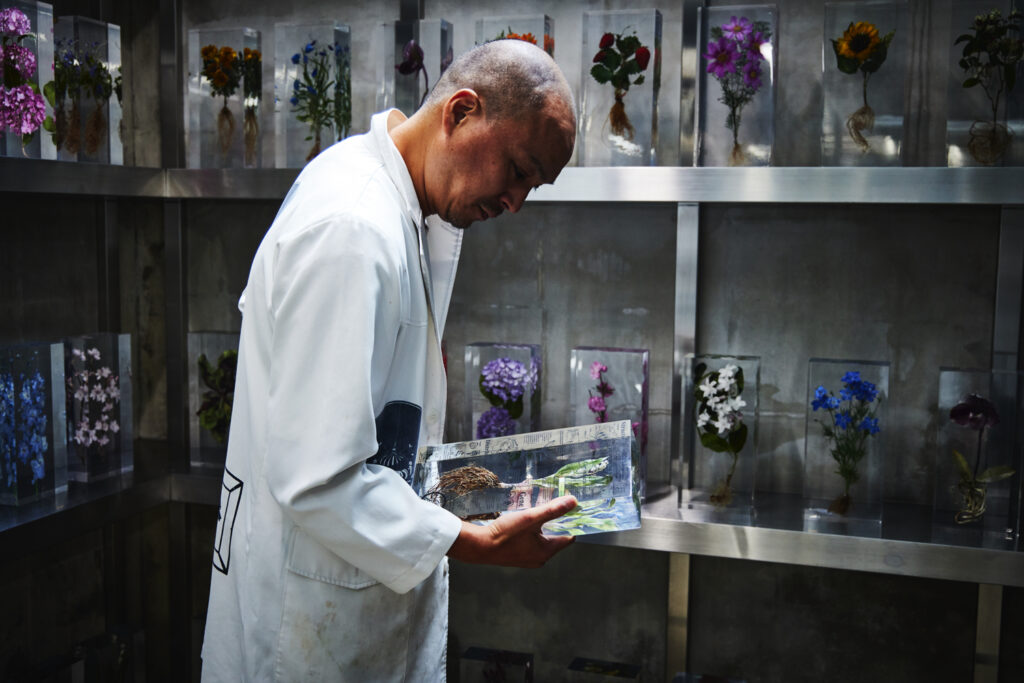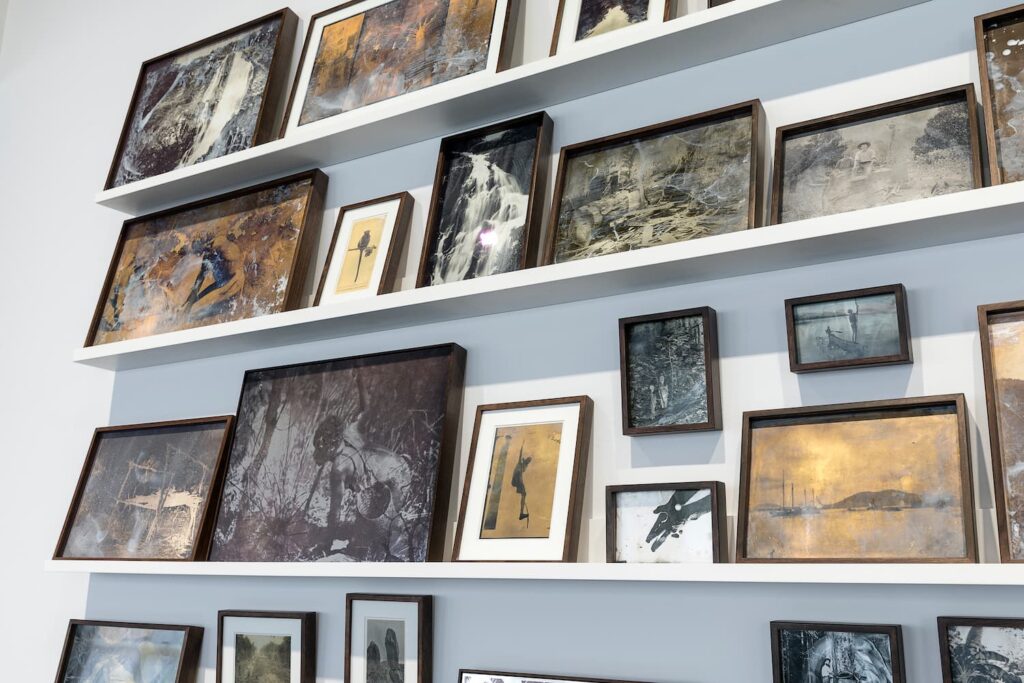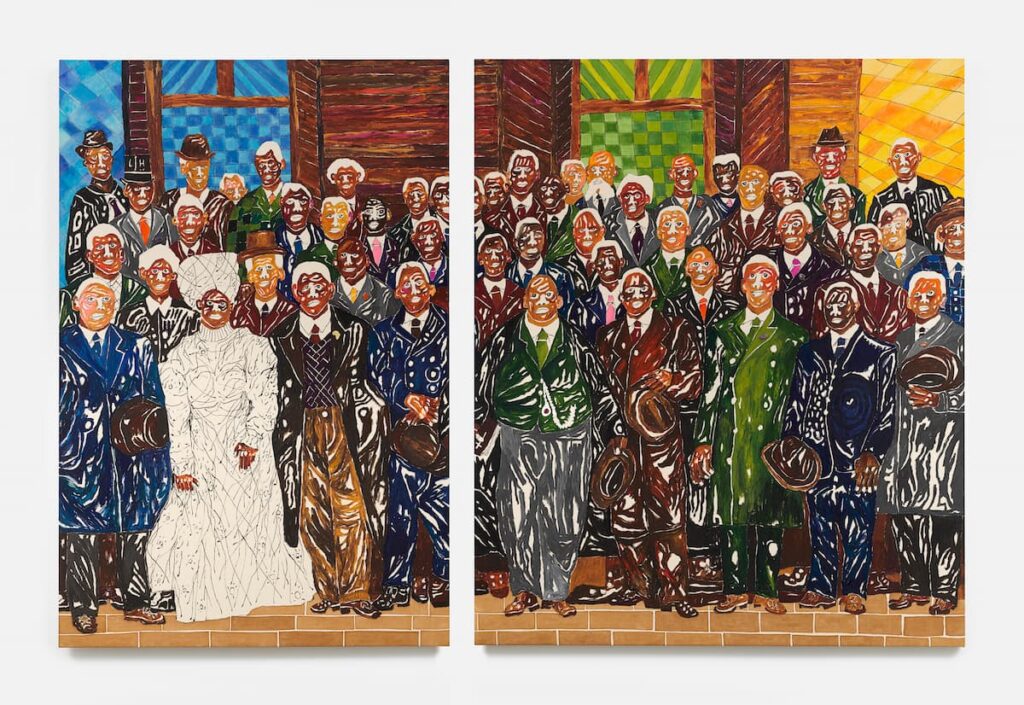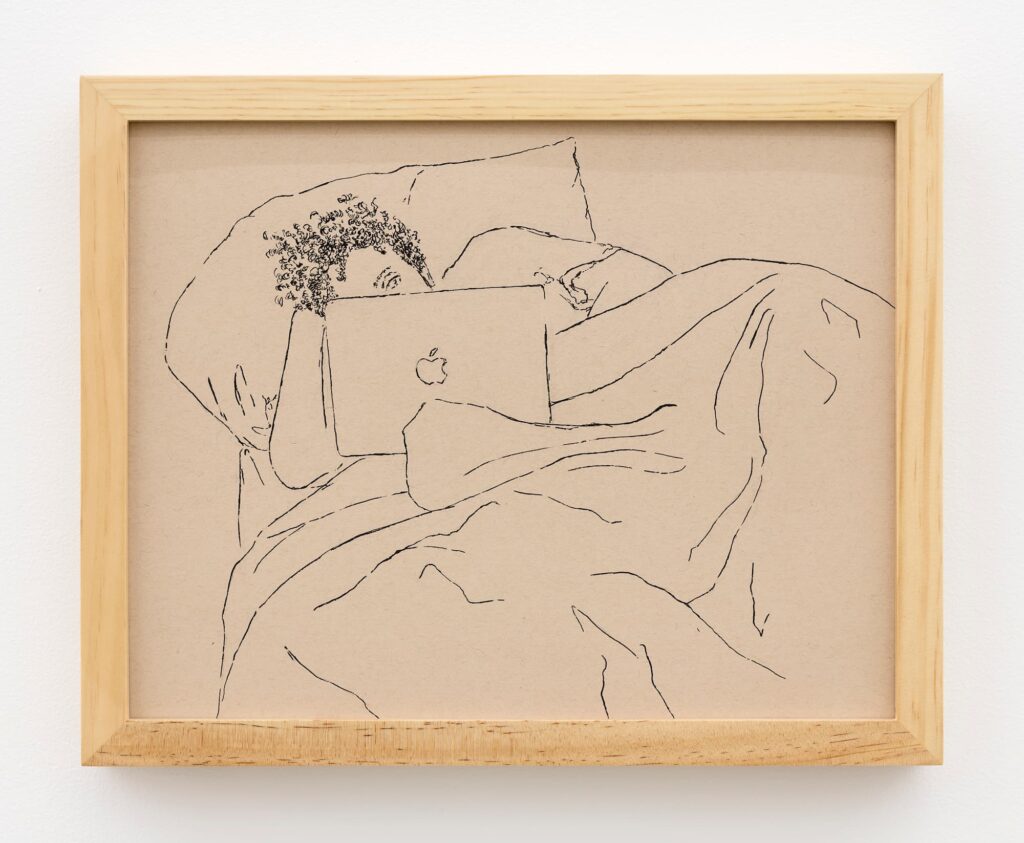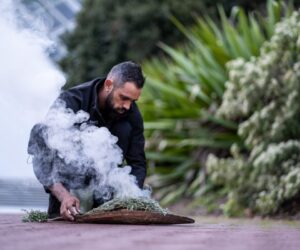NGV Triennial 2023: Nearly 100 Projects by 120+ Artists, Designers and Collectives
NGV Triennial 2023, opened 3 December, is a powerful and moving snapshot of the world today as captured through the work of over 120 artists, designers and collectives working at the forefront of global contemporary practice.
Uniquely bringing contemporary art, design and architecture into dialogue with one another and traversing all four levels of NGV International, the NGV Triennial features nearly 100 projects led by creatives including Yoko Ono (Japan), Sheila Hicks (USA), Tracey Emin (UK), Betty Muffler (Australia), David Shrigley (UK), Maison Schiaparelli (France), Maurizio Cattelan (Italy), Shakuntala Kulkarni (India), Lin Fanglu (China), Ivan Navarro (Chile), Petrit Halilaj (Kosovo), Ihor Okuniev (Ukraine), Ezz Monem (Egypt), Thomas J Price (UK), Iris van Herpen (Netherlands), Jean Jullien (France), Fernando Laposse (Mexico), Azuma Makoto (Japan), Flora Yukhnovich (UK), Yee I-Lann (Malaysia), Farrokh Mahdavi (Iran), Hugh Hayden (USA), Elmgreen and Dragset (Denmark, Norway), and many more.
More than 25 projects commissioned by the NGV will make their world premiere at the NGV Triennial 2023, attesting to the extraordinary ways in which leading and emerging artists and designers capture and recount the stories of our time. With many of the works on display entering the NGV Collection, the NGV Triennial establishes a lasting legacy for Victoria that can be accessed for many generations to come. Visitors will encounter an array of artforms and disciplines, ranging from robotics to AI, textiles to sculpture, and animatronics to conceptual art.
Three thematic pillars of Magic, Matter and Memory anchor the 2023 NGV Triennial. The theme of Magic delves into belief systems, allegory and symbolism, revealing some of the ways that human spirituality has shaped the world around us. Matter draws together nature, materials and making, highlighting the central role that materials and the natural world play in shaping human culture. Finally, Memory shines a light on both the histories of people, places and objects that make up the complex tapestry of our contemporary world.
Highlights include an exciting selection of recently acquired works by British artist Tracey Emin, whose autobiographical and confessional practice spans film, painting, drawing, installation and sculpture. Featured works include a five-metre-high text-based neon light installation of Emin’s own handwriting; abstract and tactile bronze sculptures; as well as gestural and figurative paintings that confront extreme emotions such as anguish, elation or pain.
David Shrigley, known for his darkly humorous artworks which reflect on the banality and absurdity of everyday life, presents his monumental public sculpture, Really good, 2016. The work was originally conceived for the Fourth Plinth in London’s iconic Trafalgar Square, in the immediate aftermath of the UK’s decision to leave the European Union. Taking the form of a seven-metre-high thumbs-up, the sculpture is characteristic of the self-conscious irony often found in Shrigley’s work and is intended as both a satirical and sincere gesture.
In a special collaboration with Paris haute couture house Maison Schiaparelli, the NGV has invited artistic director Daniel Roseberry to present eight looks from recent collections alongside a selection of gilded accessories and surreal body adornments. Presented within an immersive and celestial environment, the display highlights Roseberry’s interest in pushing the boundaries of couture practice, his belief in fantasy and his view that art and fashion can question, shape and address the concerns of contemporary life.
Counter-culture icon Yoko Ono will present a large-scale text-based work on the façade of NGV International. Boldly declaring ‘I LOVE YOU EARTH’, her text works have appeared on billboards and banners across cities and public spaces around the world ahead of its Australian premiere. The NGV Triennial will also feature Ono’s participatory work, MY MOMMY IS BEAUTIFUL, 2010, where visitors are asked to display their written or drawn reflections about their own mothers or mother-like figures to NGV’s gallery walls.
The viral banana and duct tape artwork by Maurizio Cattelan, titled Comedian, 2019, makes its Australian debut in the NGV Triennial. Much like the work’s premiere at Art Basel Miami in 2019, this Australian iteration of the artwork will encourage debate amongst visitors about the role of conceptual art in contemporary life and culture.
Senior American-born, Paris-based sculptor Sheila Hicks presents Nowhere to Go, 2022, a major sculptural installation utilising brightly coloured fibre. Stacked high in a monumental mass, the rounded forms gather and create an imposing and yet playful installation that celebrates the experience of architectural space and the emotional potential of colour. Handmade by Hicks’s small studio, the work is epic in scale, standing almost 7 metres high.
Kosovan artist Petrit Halilaj will create a new iteration of his immersive installation, Very volcanic over this green feather, 2022. Drawing from lived experience, the installation takes inspiration from Halilaj’s childhood drawings, made in the Kukës II refugee camp in Albania during the height of the Kosovan War. Interspersing depictions of rural landscapes, animals, birds with symbols of death and destruction, the installation reveals the slippery relationship between the real and the imagined, personal and collective memory, and recorded history and lived experience.
Land, 2022, is a haunting sound work by Ukrainian artist Ihor Okuniev, whose multimedia practice draws from a deep fascination with his home country’s nature and culture. Created in 2022, the year Russia began its full-scale invasion of Ukraine after almost a decade of war, the twenty-minute piece explores the sounds of war-ravaged nature. Okuniev recorded Land in between his work with Livyj Bereh, a volunteer organisation he developed to restore the roofs of houses in villages damaged by the invasion.
French artist Jean Jullien transforms the dedicated NGV Kids gallery into RIFIFI: Jean Jullien for Kids, an underwater world inspired by the artist’s childhood trips to the coast in France. Jullien is widely admired for his recognisable and graphic visual language, characterised by black brushstrokes paired with a bold block colour. Dressing up in fish costumes created by Jullien, children can explore an immersive and interactive exhibition space featuring large-scale drawings by the artist; a marine conservation activity encouraging beach cleaning; an aquatic-themed drawing activity; and plush starfish and clam soft sculptures.
In her contemporary textile works, Lin Fanglu foregrounds the often-overlooked work of female artisans who produce traditional crafts. In her large scale textile sculpture She’s Four Seasons, 2023, Lin draws on her own experience of learning the ancient tie-dyeing techniques of the Bai people in Zhou Cheng village, Yunnan province, where she lived for an extended period of time while completing her Master’s degree. The work celebrates the Bai women’s millennia-old craft by focusing on the physically challenging and time-consuming process of tie-dyeing – the continuous act of knotting, twisting and tying the cotton fabric by hand– that usually remains unseen.
Megacities is a large-scale NGV-commissioned project that invites ten leading street photographers to develop a new series of work that captures one of the ten global megacities: Cairo, Dhaka, Jakarta, Delhi, São Paulo, Shanghai, Seoul, Lagos, Tokyo and Mexico City. A megacity has a population exceeding 10 million, creating intense urban environments that, as these ten photographers reveal, bear interesting differences and similarities across each context. Working collaboratively with the NGV, the photographers will stage their work in a dynamic, immersive environment and present a thought-provoking fact of the twenty-first century, an urban phenomenon – enunciating that for the first time in history the dominant human habitat is the city, and that we are rapidly becoming an urban species.
Mun-dirra is a monumental woven fish fence which was produced over two years by 13 artists working with three apprentices in Maningrida, Arnhem Land. The immersive installation is made up of ten segments and represents one of the most two common types of fish traps produced in the area. The weavers are all women from the Burarra language group in Western Arnhem Land, who specialise in the customary weaving. The artists use the woven pandanus form to tell a powerful story about the way knowledge is transferred matrilineally, as well as how Burrarapeople have lived sustainably with the lands and waterways for generations.
An eight-metre-long bronze eel trap by Wurundjeri artist Aunty Kim Wandin will be installed in the moat of NGV International. Visible to Melbournians twenty-four hours a day, seven days a week, this major new work acknowledges the profound connections between Wurundjeri people and the lands and waterways that they have been custodians of for generations. Commissioned by the City of Melbourne in partnership with the NGV, the sculpture is a tribute to the history of Wurundjeri women, their tradition of weaving, and their relationship with the short-finned eel, known in their language as iuk.
Four works by collaborative duo Elmgreen and Dragset reveal the satirical and queer lens they apply to sculpture and installation. Dangling desperately above the heads of Triennial visitors, What’s left, fig. 2, 2023, presents a startling realistic silicone figure clinging singlehandedly to a tightrope. The figure wears a t-shirt that reads ‘What’s left?’, referencing a time in the artists’ lives when they sought out dangerous activities and situations to combat the lethargy of office work.
Polish-born, US-based artist Agnieszka Pilat has trained robot dogs to paint autonomously – a breakthrough in her practice that explores the power of technology in contemporary society. Pilat also questions whether we can find empathy for AI enabled robots – who will increasingly live among us, and in time may become sentient. Over four months, audiences can witness in real time the three robot dogs as they paint large-scale canvases. Pilat imagines that in a distant future these paintings will be revered as the first art of AI enabled robots.
For the NGV Triennial, Tokyo-based artist Azuma Makoto presents a room sized installation featuring a multitude of flowers and botanicals frozen into crystalline acrylic blocks. An homage to the magical beauty and lifeforce of plants, the artist places these jewel-like sculptural elements in dialogue with a beguiling multi-screen film depicting the life and death of flowers. Through the installation Azuma invites viewers to explore the complex and fragile relationship between humans and plants.
Leading Iranian Australian photomedia artist Hoda Afshar presents her largest project to date, The Fold, 2023, a visual and psychological investigation of the French psychiatrist and photographer Gaëtan Gatian de Clérambault (1872-1934). Unfolding in three parts, Afshar’s new commission for Triennial continues the artist’s decade-long exploration into how the medium of photography became – and continues to serve as – one of the central tools in the project of colonialism thought its representations of Islamic women.
Working primarily in figurative sculpture, Thomas J. Price’s practice addresses issues of identity, representation and power. All In, 2021, and Reaching Out, 2020, are two figurative sculptures that stand at over 3.5 meters and 2.7 meters respectively, set to intentionally tower over visitors in Federation Court. For Price, these works confront the lack of people of colour represented in public statuary in the UK, however, this lack of representation is an issue that plays out across the globe. The figures are purposefully ambiguous in that they do not depict a certain individual, their image drawn from an amalgamation of found sources, including observed individuals and stereotypes represented in the media.
Conflict Avocados, Fernando Laposse’s most ambitious project to date, explores the problematic conditions driving avocado production in Mexico, the world’s largest producer and exporter of the fruit. Focusing on the town of Cherán and the Michoacán region, Laposse recounts through furniture, objects, film and a major 40m long narrative textile – the Cherán Tapestry – the struggle by local people to preserve their forest ecosystem, which is being cleared for avocado production. Looking beyond the violence that governs much of the Mexican avocado trade, Laposse uncovers stories of resilience, resistance and hope, using avocado as a key material in his work to engage audience curiosity and build solidarity with those impacted by this industry in Mexico.
For the NGV Triennial, Malaysia-born Yee I-Lann has collaborated with Bajau Laut weavers, who reside off the coast of Sabah, Malaysia, to make tikar (woven mats). Tikar/Meja (Mat/Table) is a large-scale display of 60 Bajau Sama Dilaut mats, each with an image of a table woven upon it. The work draws attention to the colonial history of tables, which were not a feature of daily life in pre-colonial South-East Asia as people sat on mats, grounded to the earth. For Yee, the table is the site of colonial power, where the decisions were made, the rules written, and bureaucracy of colony enacted. A potent symbol for the imposed systems of suppression, extraction and control that echo forwards today.
For the MECCA x NGV Women in Design Commission London-based multidisciplinary designer Bethan Laura Wood has created Kaleidoscope-o-rama, 2023 including two new major pieces Kaleidoscope-o-rama, carpet and Kaleidoscope-o-rama, bookcase, each conceived in dialogue with Regency era (c. 1811–20) works from the NGV Collection and presented among an immersive audio-visual display.
In the NGV Garden a giant inflatable sphere – which literally breathes throughout the day – makes the invisible visible for the 2023 Architecture Commission. (This is) Air, developed by Nic Brunsdon in collaboration with ENESS, draws attention to one of the universal and defining features of life on Earth: breathing air.
Tony Ellwood AM, Director, NGV, said: ‘In the three years since the last NGV Triennial, the world has experienced a great many structural shifts, including a global pandemic. Through the work of more than 100 artists, designers, architects and collectives from Australia and around the world, the NGV Triennial offers a powerful insight into the ideas and concerns empowering creative practice in 2023.’
‘The artists, designers and architects of our time play an important role in helping us to understand, navigate and relate to the world around us. The 2023 NGV Triennial offers audiences a valuable opportunity to experience new and surprising forms of creative expression from around the globe, which, together, present a compelling snapshot of the world as it is, while also asking how we would like it to be,’ said Ellwood.
The Hon. Colin Brooks, Minister for Creative Industries, said: ‘Get ready for a huge summer of art with the return of the NGV Triennial. Free and exclusive-to-Melbourne, the exhibition brings together the work of more than 100 of the most exciting artists and designers working around the world today.’
Marking the opening of the Triennial, the NGV presents a week of celebrations culminating with a full day of free talks, conversations and tours led by NGV curators and featuring local and international artists on Sunday 3 December.
The NGV Triennial is on display from 3 December 2023 – 7 April 2024 at NGV International, St Kilda Road, Melbourne. Entry is FREE. Further information is available via the NGV website: NGV.MELBOURNE
